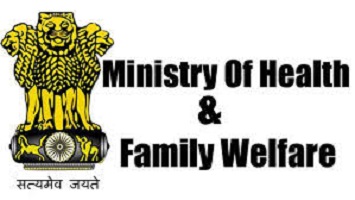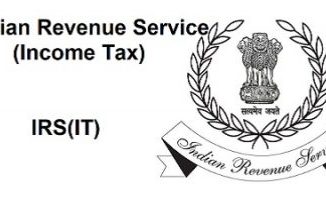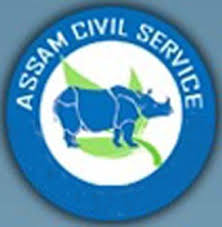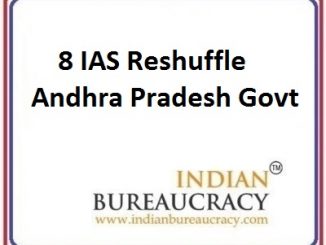
The Union Minister of State for Health and Family Welfare, Dr. Bharati Pravin Pawar has informed that As per the Sample Registration System (SRS) Bulletin of Registrar General of India (RGI), the Infant Mortality Rate (IMR) has reduced from 37 per 1000 live births in 2015 to 30 per 1,000 live births in 2019 at National Level.
The State/ UT wise details of Infant Mortality Rate (IMR) for the period from 2015 to 2019 are as follows:
| S. No. | National/ State/ UT | Infant Mortality Rate (per 1000 live births) | ||||
| 2015 | 2016 | 2017 | 2018 | 2019 | ||
| ALL INDIA | 37 | 34 | 33 | 32 | 30 | |
| 1 | Andhra Pradesh | 37 | 34 | 32 | 29 | 25 |
| 2 | A&N Islands | 20 | 16 | 14 | 9 | 7 |
| 3 | Arunachal Pradesh | 30 | 36 | 42 | 37 | 29 |
| 4 | Assam | 47 | 44 | 44 | 41 | 40 |
| 5 | Bihar | 42 | 38 | 35 | 32 | 29 |
| 6 | Chandigarh | 21 | 14 | 14 | 13 | 13 |
| 7 | Chhattisgarh | 41 | 39 | 38 | 41 | 40 |
| 8 | D&N Haveli | 21 | 17 | 13 | 13 | 11 |
| 9 | Daman & Diu | 18 | 19 | 17 | 16 | 17 |
| 10 | Delhi | 18 | 18 | 16 | 13 | 11 |
| 11 | Goa | 9 | 8 | 9 | 7 | 8 |
| 12 | Gujarat | 33 | 30 | 30 | 28 | 25 |
| 13 | Haryana | 36 | 33 | 30 | 30 | 27 |
| 14 | Himachal Pradesh | 28 | 25 | 22 | 19 | 19 |
| 15 | J & K including Ladakh | 26 | 24 | 23 | 22 | 20 |
| 16 | Jharkhand | 32 | 29 | 29 | 30 | 27 |
| 17 | Karnataka | 28 | 24 | 25 | 23 | 21 |
| 18 | Kerala | 12 | 10 | 10 | 7 | 6 |
| 19 | Lakshadweep | 20 | 19 | 20 | 14 | 8 |
| 20 | Madhya Pradesh | 50 | 47 | 47 | 48 | 46 |
| 21 | Maharashtra | 21 | 19 | 19 | 19 | 17 |
| 22 | Manipur | 9 | 11 | 12 | 11 | 10 |
| 23 | Meghalaya | 42 | 39 | 39 | 33 | 33 |
| 24 | Mizoram | 32 | 27 | 15 | 5 | 3 |
| 25 | Nagaland | 12 | 12 | 7 | 4 | 3 |
| 26 | Odisha | 46 | 44 | 41 | 40 | 38 |
| 27 | Puducherry | 11 | 10 | 11 | 11 | 9 |
| 28 | Punjab | 23 | 21 | 21 | 20 | 19 |
| 29 | Rajasthan | 43 | 41 | 38 | 37 | 35 |
| 30 | Sikkim | 18 | 16 | 12 | 7 | 5 |
| 31 | Tamil Nadu | 19 | 17 | 16 | 15 | 15 |
| 32 | Telangana | 34 | 31 | 29 | 27 | 23 |
| 33 | Tripura | 20 | 24 | 29 | 27 | 21 |
| 34 | Uttar Pradesh | 46 | 43 | 41 | 43 | 41 |
| 35 | Uttarakhand | 34 | 38 | 32 | 31 | 27 |
| 36 | West Bengal | 26 | 25 | 24 | 22 | 20 |
| Source: Sample Registration System of Registrar General of India | ||||||
As per the Sample Registration System (SRS) Report of Registrar General of India (RGI), the Maternal Mortality Rate (MMR) has reduced from 8.1 in 2015-17 to 7.3 in 2016-18 at National Level. The Status of MMR at National level and State level as per SRS 2015-17 and 2016-18 are as follows:
| Status of Maternal Mortality Rate (MMR) | ||
| India/ States | 2015-17 | 2016-18 |
| ALL INDIA | 8.1 | 7.3 |
| Andhra Pradesh | 3.6 | 3.6 |
| Assam | 15.2 | 14.0 |
| Bihar | 16.9 | 15.1 |
| Jharkhand | 6.1 | 5.6 |
| Gujarat | 6.0 | 5.1 |
| Haryana | 7.7 | 7.0 |
| Karnataka | 7.3 | 4.9 |
| Kerala | 1.9 | 2.1 |
| Madhya Pradesh | 17.5 | 15.9 |
| Chhattisgarh | 11.0 | 12.1 |
| Maharashtra | 3.3 | 2.6 |
| Odisha | 11.1 | 9.7 |
| Punjab | 6.8 | 7.0 |
| Rajasthan | 16.8 | 14.5 |
| Tamil Nadu | 4.8 | 3.2 |
| Telangana | 3.8 | 3.6 |
| Uttar Pradesh | 20.1 | 17.8 |
| Uttarakhand | 5.9 | 6.4 |
| West Bengal | 5.0 | 5.0 |
| Other States | 4.7 | 4.5 |
| Source: Sample Registration System (SRS) of Registrar General of India (RGI) | ||
In order to bring down Infant Mortality Rate (IMR) and Maternal Mortality Rate (MMR), the Ministry of Health and Family Welfare (MoHFW) is supporting all States/UTs in implementation of Reproductive, Maternal, New-born, Child, Adolescent health and Nutrition (RMNCAH+N) strategy under National Health Mission (NHM) based on the Annual Program Implementation Plan (APIP) submitted by States/ UTs. The interventions taken up by Govt. are:
Interventions for improving Maternal Mortality Rate (MMR):
- Janani Suraksha Yojana (JSY), a demand promotion and conditional cash transfer scheme was launched in April 2005 with the objective of reducing Maternal and Infant Mortality by promoting institutional delivery among pregnant women.
- Janani Shishu Suraksha Karyakram (JSSK) aims to eliminate out-of-pocket expenses for pregnant women and sick infants by entitling them to free delivery including caesarean section, free transport, diagnostics, medicines, other consumables, diet and bloodin public health institutions.
- SurakshitMatratvaAshwasan (SUMAN) aims to provide assured, dignified, respectful and quality healthcare at no cost and zero tolerance for denial of services for every woman and newborn visiting the public health facility to end all preventable maternal and newborn deaths.
- Pradhan MantriSurakshitMatritvaAbhiyan (PMSMA) provides pregnant women fixed day, free of cost assured and quality Antenatal Careon the 9thday of every month.
- LaQshya aims to improve the quality of care in labour room and maternity operation theatres to ensure that pregnant women receive respectful and quality care during delivery and immediate post-partum period.
- Comprehensive Abortion Care services are strengthened through trainings of health care providers, supply of drugs, equipment, Information Education and Communication (IEC) etc.
- Midwifery programmeis launched to create a cadre for Nurse Practitioners in Midwifery who are skilled in accordance to International Confederation of Midwives (ICM) competencies and capable of providing compassionate women-centred, reproductive, maternal and new-born health care services.
- Delivery Points-Over 25,000 ‘Delivery Points’ across the country are strengthened in terms of infrastructure, equipment, and trained manpower for provision of comprehensive RMNCAH+N services.
- Functionalization of First Referral Units (FRUs)by ensuring manpower, blood storage units, referral linkages etc.
- Setting up of Maternal and Child Health (MCH) Wings at high caseload facilities to improve the quality of care provided to mothers and children.
- Operationalization of Obstetric ICU/HDU at high case load tertiary care facilities across country to handle complicated pregnancies.
- Capacity building is undertaken for MBBS doctors in Anesthesia (LSAS) and Obstetric Care including C-section (EmOC) skills to overcome the shortage of specialists in these disciplines, particularly in rural areas.
- Maternal Death Surveillance Review (MDSR) is implemented both at facilities and at the community level. The purpose is to take corrective action at appropriate levels and improve the quality of obstetric care.
- Monthly Village Health, Sanitation and Nutrition Day (VHSND) is an outreach activity for provision of maternal and child care including nutrition.
- Regular IEC/BCC activities are conducted for early registration of ANC, regular ANC, institutional delivery, nutrition, and care during pregnancy etc.
- MCP Card and Safe Motherhood Booklet are distributed to the pregnant women for educating them on diet, rest, danger signs of pregnancy, benefit schemes and institutional deliveries.
Interventions for improving Infant Mortality Rate (IMR):
- Facility Based New-born Care:Sick New-born Care Units (SNCUs) are established at District Hospital and Medical College level, New-born Stabilization Units (NBSUs) are established at First Referral Units (FRUs)/ Community Health Centres (CHCs) for care of sick and small babies.
- Community Based care of New-born and Young Children:Under Home Based New-born Care (HBNC) and Home-Based Care of Young Children (HBYC) program, home visits are performed by ASHAs to improve child rearing practices and to identify sick new-born and young children in the community.
- Mothers’ Absolute Affection (MAA):Early initiation and exclusive breastfeeding for first six months and appropriate Infant and Young Child Feeding (IYCF) practices are promoted under Mothers’ Absolute Affection (MAA).
- Social Awareness and Actions to Neutralize Pneumonia Successfully (SAANS) initiative implemented since 2019 for reduction of Childhood morbidity and mortality due to Pneumonia.
- Universal Immunization Programme (UIP) is implemented to provide vaccination to children against life threatening diseases such as Tuberculosis, Diphtheria, Pertussis, Polio, Tetanus, Hepatitis B, Measles, Rubella, Pneumonia and Meningitis caused by Haemophilus Influenzae B. The Rotavirus vaccination has also been rolled out in the country for prevention of Rota-viral diarrhoea. Pneumococcal Conjugate Vaccine (PCV) has been introduced in all the States and UTs.
- Rashtriya Bal Swasthya Karyakaram (RBSK): Children from 0 to 18 years of age are screened for 30 health conditions (i.e. Diseases, Deficiencies, Defects and Developmental delay) under Rashtriya Bal SwasthyaKaryakaram (RBSK) to improve child survival. District Early Intervention Centres (DEICs) at district health facility level are established for confirmation and management of children screened under RBSK.
- Nutrition Rehabilitation Centres (NRCs)are set up at public health facilities to treat and manage the children with Severe Acute Malnutrition (SAM) admitted with medical complications.
- Intensified Diarrhoea Control Fortnight / Defeat Diarrhoea (D2) initiative implemented for promoting ORS and Zinc use and for reducing diarrhoeal deaths.
- Anaemia Mukt Bharat (AMB) strategy as a part of POSHANAbhiyan aims to strengthen the existing mechanisms and foster newer strategies to tackle anaemia which include testing & treatment of anaemia in school going adolescents & pregnant women, addressing non nutritional causes of anaemia and a comprehensive communication strategy.
- Capacity Building: Several capacity building programs of health care providers are taken up for improving maternal and child survival and health outcomes.







Leave a Reply
You must be logged in to post a comment.